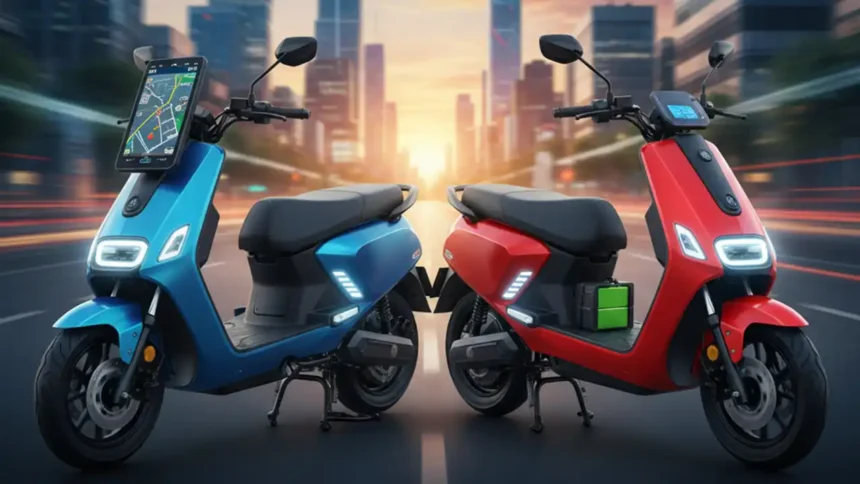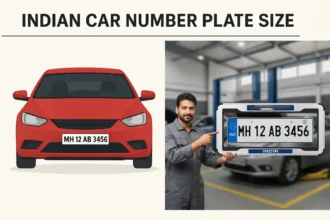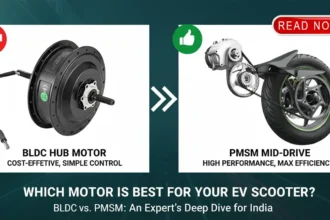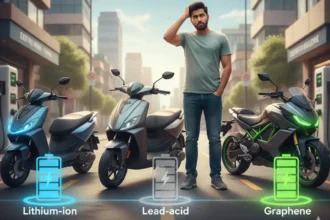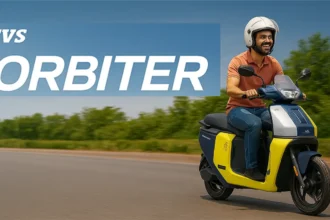Electric Scooter Technology Expert Guide to Premium vs. Local Models
The way we move around cities is rapidly changing, and the electric scooter (EV scooter) is at the forefront of this shift. I’ve seen how quickly this technology has grown. No longer are they just slow, short-range novelty items. Today’s top electric scooters are powerful, smart, and a genuine alternative to traditional petrol scooters for urban commuting and even longer trips. This post will take a deep dive into the latest Electric Scooter Technology, comparing the best in the market and giving you a clear picture of what powers this silent revolution. This is more than just transportation; it’s about smart, sustainable mobility.
Core Electric Scooter Technology Specifications
Modern electric scooters are defined by a few key technical specifications that you should always look at. These details, especially the battery and motor, determine the scooter’s real-world performance.
| Specification | Premium Models | Local/Budget Models |
| Battery Type | High-density Lithium-ion (Li-ion) or Advanced LFP (Lithium Iron Phosphate) | Led-Acid, Graphene, or Standard Lithium-ion |
| Battery Capacity | 3.7 kWh to 5 kWh and above | 2 kWh to 3 kWh |
| Real-World Range | 150 km to 200+ km (True Range) | 80 km to 120 km (Eco Mode) |
| Motor Type | Mid-Drive Permanent Magnet Synchronous Motor (PMSM) or high-power Hub Motor | BLDC Hub Motor (Basic) |
| Peak Power | 6 kW to 11 kW | 1 kW to 4.5 kW |
| Top Speed | 90 km/h to 120 km/h | 48 km/h to 70 km/h |
| Charging Time (0-80%) | 3 to 5.5 hours (Often with Fast Charging options) | 4 to 7 hours (Standard Charger) |
| Smart Features | Large TFT Touchscreen, GPS Navigation, OTA Updates, Cruise Control, App Integration, Hill-Hold | Digital LCD, USB Charging, Basic App Connectivity |
A Detailed Look at Electric Scooter Technology
The technology inside an EV scooter is a sophisticated blend of electrical, mechanical, and software engineering. Understanding these parts is key to appreciating their performance.
1. Battery Technology and Energy Management
The battery is the heart of the electric scooter. The industry standard is moving towards advanced Lithium-ion chemistry, often using NMC (Nickel Manganese Cobalt) for high energy density (more range) or LFP (Lithium Iron Phosphate) for better safety and a longer life cycle.
- High Energy Density: Premium scooters focus on maximizing the energy stored in the smallest, lightest possible battery pack, giving them superior driving range. Models like the Ola S1 Pro and Simple One push the envelope with ranges exceeding 195 km on a single charge.
- Battery Management System (BMS): This is the brain for the battery pack. A sophisticated BMS is vital for safety, efficiency, and battery lifespan. It constantly monitors voltage, temperature, and current. Premium scooters have very advanced, proprietary BMS to ensure the battery remains safe under all conditions and maintains optimal performance throughout its life.
- Charging Innovations: Fast charging, where the battery can reach 80% charge in a short time, is a major feature of premium scooters (like Ather’s Grid network). Some models also offer swappable batteries (like Hero Vida) or portable chargers for home use, greatly reducing range anxiety.
2. Motor and Performance
The electric motor is what converts the battery’s electrical energy into motion.
- Motor Types: Most basic and local scooters use a Hub Motor, which is placed directly in the wheel hub. It is simple, affordable, and requires less maintenance. Premium scooters, however, often use a Mid-Drive Motor (or a very powerful, highly-optimized Hub Motor). A mid-drive motor sends power through a gearbox or chain, allowing for better heat management, higher torque, and superior performance, especially on inclines.
- Regenerative Braking: This essential EV technology helps recharge the battery when the rider slows down. Instead of wasting kinetic energy as heat (like in traditional brakes), the motor acts as a generator, feeding energy back to the battery. High-end scooters offer adjustable regenerative braking levels, allowing the rider to control how much slowing-down force they get when they ease off the throttle.
3. Smart Features and Connectivity (IoT)
Modern EV scooters are truly smart vehicles. They are computers on wheels, offering features that petrol scooters simply cannot match.
- Touchscreen and User Interface (UI): Premium models feature large, high-resolution TFT touchscreens that act as the main interface. These displays show ride metrics, navigation (GPS tracking), music controls, and even allow for personalized profiles.
- Over-the-Air (OTA) Updates: Just like your smartphone, premium EV scooters receive OTA software updates that can add new features, fix bugs, and even improve performance and efficiency over time. This keeps the scooter feeling fresh and technologically advanced.
- Mobile App Integration: Companion apps allow riders to check the battery status, track the scooter’s location (geo-fencing for security), remotely lock/unlock it, and view detailed ride statistics.
Premium Electric Scooter Technology vs. Local/Budget EV Scooter Technology
The difference between a premium EV scooter and a local/budget EV scooter is primarily in the quality, complexity, and integration of the core technologies.
Premium Electric Scooter Technology (The Innovators)
Brands like Ola, Ather, TVS (iQube/X), and Bajaj (Chetak) focus on performance, software, and build quality.
- Advanced Powertrain: They use high-performance motors (often mid-drive or high-kW hub motors) and larger, higher-voltage battery packs for a real-world range over 150 km and top speeds well above 80 km/h. They offer multiple, distinct riding modes (Eco, Sport, Hyper) that genuinely change the scooter’s character and power delivery.
- Sophisticated Software: The entire experience is software-driven. The large touchscreen is integrated with advanced software for turn-by-turn navigation, vehicle diagnostics, and continuous improvement via OTA updates. They lead in connected mobility.
- Safety and Durability: Premium scooters invest heavily in safety, using features like disc brakes on both wheels, advanced CBS (Combined Braking System) or ABS (Anti-lock Braking System), and robust chassis design (e.g., Ather’s aluminum frame). Their batteries often feature superior cooling and protection.
Local/Budget Electric Scooter Technology (The Practical Commuters)
Brands like Hero Electric, Ampere, and many new local players focus on affordability, simplicity, and low running cost.
- Basic Powertrain: They use smaller, simpler Hub Motors and smaller battery packs (often 2-3 kWh), which results in a lower top speed (often limited to 48-60 km/h) and a shorter real-world range (around 80-100 km). They are perfect for short daily commutes.
- Essential Features: They offer basic digital dashboards, keyless start, and sometimes a basic mobile app for tracking. The focus is on providing reliable, functional mobility without the complex software features of their premium counterparts.
- Removable Batteries: Many budget models use removable batteries, which is a huge convenience for people without dedicated parking or charging points, allowing them to charge the battery inside their home or office. While this makes the scooter less complex, it can sometimes mean a smaller battery capacity.
Suggestions for Future Electric Scooter Technology
As an EV expert, here are a few areas where electric scooter technology is set to improve:
- Solid-State Batteries: This next-generation battery technology promises higher energy density (meaning even longer range), faster charging, and significantly improved safety over current Li-ion batteries. This will be the game-changer for eliminating range anxiety.
- Vehicle-to-Grid (V2G) Capability: Scooters could become portable power banks. Imagine being able to use your scooter’s battery to power a few lights at home during a power cut. This will make the EV scooter a true energy asset.
- Advanced Driver Assistance Systems (ADAS): Features like forward collision warnings, blind-spot detection, and better parking assist using sensors and simple cameras will greatly improve rider safety in crowded urban areas.
Conclusion
The Electric Scooter Technology landscape in 2025 is dynamic and exciting. The market has matured, offering everything from basic, cost-effective commuters with local technology to high-performance, software-integrated machines with cutting-edge premium technology. The core message is clear: EV scooters are here to stay, offering a genuine, superior, and eco-friendly alternative to petrol scooters. When choosing an electric scooter, always prioritize the quality of the battery and BMS, the efficiency of the motor, and the level of integrated smart technology that suits your daily needs. The future of urban mobility is electric, and it’s happening right now.
FAQs (Frequently Asked Questions)
Q: What is the most important part of an electric scooter?
A: The Battery Management System (BMS) is arguably the most important, as it ensures the safety, efficiency, and longevity of the high-voltage Lithium-ion battery which is the core power source.
Q: What is the typical real-world range of a good EV scooter?
A: For premium models, you can expect a real-world range of 150 km to over 200 km on a single charge. Budget models usually offer 80 km to 120 km.
Q: Are premium electric scooters safer than local ones?
A: Generally, yes. Premium scooters invest more in advanced safety features like high-quality disc brakes, ABS/CBS, robust chassis, and superior battery cooling/protection, thanks to their advanced EV technology.

